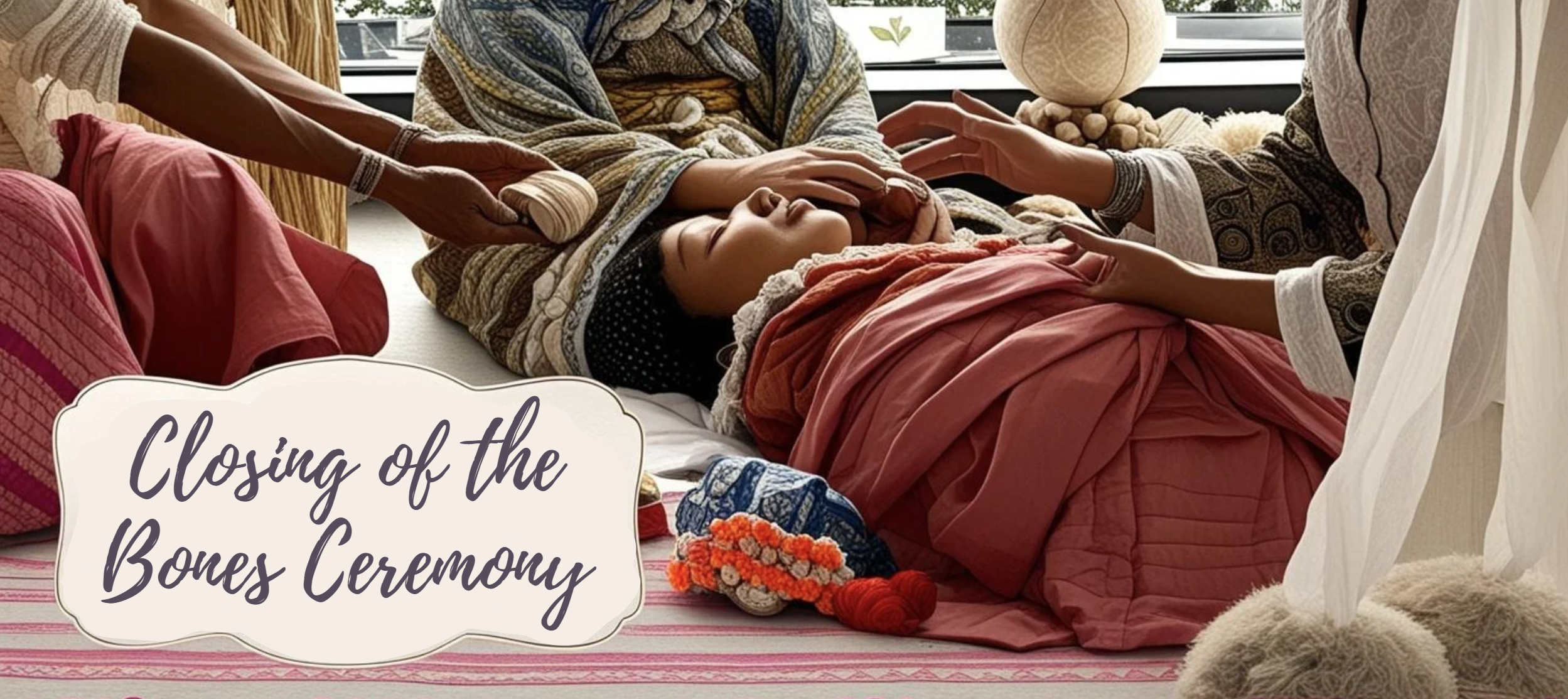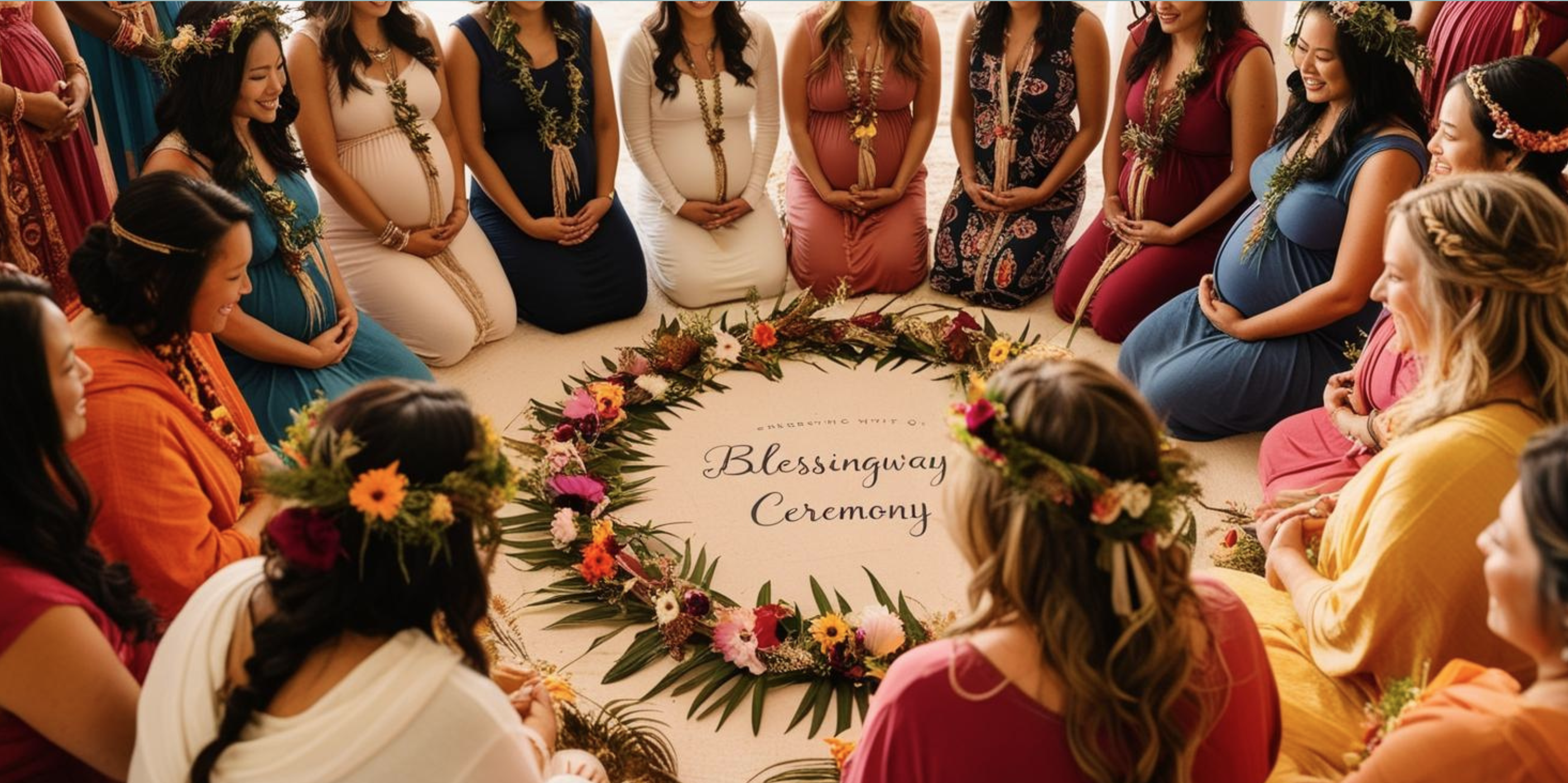
Sacred Postpartum Practices: Honoring the First 40 Days of Healing and Transformation
The postpartum period is a sacred time, a threshold between the old and the new, where the mother is reborn and transformed. This is a time to rest, heal, and reconnect with the deep wisdom of the body. It is not only about the baby’s birth, but about honoring the mother’s journey through birth and the powerful transition she is undergoing. These sacred practices provide the space for deep healing and renewal, guided by intuition, reverence, and community. Here we explore these time-honored rituals that nurture both the mother and baby in this sacred space.
1. Blessingway: A Ceremony to Honor the Mother’s Journey
The Blessingway is a sacred ceremony of love and support for the mother as she steps into the next phase of her life. Unlike the typical focus on the baby, a Blessingway centers the mother—her strength, her wisdom, her transformation. It is a space where she can feel loved, empowered, and held by those she holds dear.
To create a nurturing and healing Blessingway, begin by gathering close friends and family who wish to offer their support in a spirit of reverence. Begin by holding space for the mother—offering words of encouragement, love, and blessings. This is not just a ritual; it is a reminder that the mother’s emotional and spiritual needs are just as vital as her physical ones. One beautiful practice is the creation of a beaded necklace, with each bead representing a blessing or wish for the mother. As each person places a bead on the necklace, they infuse the mother with their love and intentions.
For those mothers who have experienced a challenging or less-than-ideal birth experience, the Blessingway can become a space for rebirthing. It is an opportunity to honor the full spectrum of her journey, to release any trauma or unspoken emotions, and to reclaim her power. This may include a ritual of cleansing, like a symbolic bath or a gathering of affirmations, where the mother is surrounded by her loved ones who help her release and heal. This process is about reconnecting her to her inner strength and guiding her into motherhood with love, tenderness, and renewal.
A Blessingway is not merely a ceremony; it is a powerful act of emotional, physical, and spiritual nurturing. It is the mother’s time to rest in the arms of those who love her, to feel deeply supported, and to honor her sacred journey.
2. The First 40 Days: A Sacred Time of Rest and Healing
The first 40 days after birth are a time of sacred rest and renewal. This period is not just for the baby, but for the mother as well. She is healing, adjusting, and shifting into a new way of being. Her body needs time to recover, her spirit needs space to recalibrate, and her heart needs time to bond with her baby in a quiet, undisturbed sanctuary.
In many cultures, the mother is encouraged to rest deeply during these 40 days. She is held and cared for by her community, whose role is to nourish her body with food, help with housework, and provide emotional and physical support. This time is a chance to honor her needs for deep rest, sleep, and relaxation. The mother is encouraged to be in the company of those who uplift her, while avoiding unnecessary visitors or distractions that could drain her energy. This sacred time is not about pleasing others or rushing through recovery—it is about honoring the rhythm of the mother’s body, and creating space for healing, bonding, and rejuvenation.
The first 40 days are a time for the mother to rediscover herself in the quiet and stillness. As she recovers, her body, heart, and mind begin to adjust to the new rhythms of motherhood. It is a time to be cherished and held, and to allow the mother to simply be.
3. Closing of the Bones: Reclaiming the Body and Spirit
The Closing of the Bones ceremony is a powerful and sacred ritual that honors the mother’s body after birth. After the profound transformation of childbirth, the mother’s body needs time to realign and heal. This ceremony—rooted in many Indigenous and traditional cultures—is designed to help the mother reconnect with her physical being and embrace her strength.
The process involves gentle bodywork, focusing on the hips, pelvis, and lower back, to help the mother’s body come back into alignment. After the massage and bodywork, the mother’s body is wrapped in a cloth or shawl, offering physical support and emotional comfort. This act is both symbolic and practical—honoring the sacredness of the mother’s body as it “closes” after the expansive experience of birth. It is a time for the mother to rest and heal, physically restoring herself while also embracing the profound shift in her identity as a mother.
The Closing of the Bones is an invitation to the mother to reclaim her strength, her peace, and her body. It is a moment of deep reverence, where the mother is cared for, held, and empowered to step into her role as a mother with strength, grace, and balance.
4. Placenta Options: Honoring the Sacred Connection
The placenta, the life-giving organ that nourished the baby throughout pregnancy, is an extraordinary symbol of connection between mother and child. It is a sacred offering, and there are several powerful, intuitive ways to honor its place in the birth story.
One sacred option is Lotus Birth, in which the placenta remains attached to the baby until it naturally detaches. This practice honors the slow, organic process of birth and the ongoing connection between the mother and baby. It is a beautiful way to respect the natural rhythm of the body and to maintain a sacred bond between mother and child during the transition.

Another profound option is burying the placenta in a sacred location (or even under a houseplant). Many mothers choose to bury the placenta near their home or in a special place in nature, grounding the mother and baby’s connection to the Earth. This ritual symbolizes renewal, rebirth, and the deep spiritual bond between the family and the natural world.
Some mothers choose encapsulation, where the placenta is dried, powdered, and placed into capsules. This is believed to support postpartum healing by replenishing the mother’s energy and hormones. Another powerful option is to create placenta prints or artwork, preserving the beauty and sacredness of the placenta as a lasting memory of the birth experience. These prints can serve as a reminder of the bond between mother and child, a symbol of the strength of the mother’s body.
Finally, cord burning is a beautiful and sacred practice that involves burning the umbilical cord in a ceremony. This act is symbolic of severing the physical connection while honoring the deep bond between mother and baby. It is a powerful and transformative ritual that can be done in the presence of loved ones, marking the moment when mother and child step into a new phase of their relationship.
Each of these placenta practices is a way to honor the sacred bond that created life and to pay tribute to the mother’s journey of transformation.
5. Co-Sleeping & Crying in Arms: The Sacred Bond of Attachment
The practices of co-sleeping and crying in arms are sacred ways to nurture and honor the emotional needs of both mother and baby. These practices honor the natural, intuitive rhythms of the baby and mother, creating a foundation of deep trust and attachment.
Co-sleeping is the practice of keeping the baby close, either in the same bed or nearby, so the mother can be fully present for her child’s needs during the night. This practice supports breastfeeding and allows for deep emotional connection. The mother’s presence brings comfort and security to the baby, ensuring that both the physical and emotional needs of the infant are met during the night.
Crying in arms is the practice of holding the baby whenever they cry, offering comfort, connection, and emotional reassurance. This practice recognizes that crying is a natural way for babies to communicate their needs, and by responding with love, the mother is affirming the baby’s emotional well-being. Holding the baby through these moments strengthens the bond, and over time, teaches the baby to trust that their needs will be met with warmth and gentleness.
Together, these practices create a foundation of trust, intimacy, and connection that will last a lifetime.
6. Traditional Postpartum Wholesome Foods: Nourishing the Body and Soul
In many cultures, the foods offered to a new mother after birth are designed to restore her body, replenish her energy, and provide the nourishment she needs to heal. These foods are not only for physical recovery, but also for emotional healing and balance. They are lovingly prepared to help the mother feel cared for, nourished, and supported.
Broths and soups are rich in vitamins and minerals that help restore the body’s balance, while ginger and turmeric offer their anti-inflammatory properties to support recovery. Organ meats, rich in iron and nutrients, are often included to help restore energy and strength. Whole grains, healthy fats, and warm, comforting meals are designed to provide lasting energy and nourishment, while also supporting lactation.
The food served to a new mother is a sacred offering, a way to honor her body and soul during the postpartum period. Each meal is an act of love, grounding her in the present moment and helping her to feel supported and cared for as she heals. Click the graphic below to order nourishing postpartum meals from MAMA MEALS.

7. Elimination Communication: A Gentle and Intuitive Approach
Elimination Communication (EC) is a practice based on the natural cues that babies give when they need to eliminate. Instead of relying solely on diapers, the mother learns to recognize these cues and offers her baby an opportunity to eliminate in a more natural, gentle way.
This practice deepens the connection between mother and baby, as it encourages a deeper awareness of the baby’s needs. It is a practice rooted in trust and respect for the baby’s natural rhythms, allowing the mother to tune into her child’s cues and respond with patience and love. EC creates an intimate bond between mother and baby, helping them communicate in ways that transcend words.
“The postpartum period is not just about the baby being born; it is about the mother being reborn. It is a time to honor the sacredness of her journey, the quiet strength in her healing, and the deep transformation that occurs within her as she welcomes new life.” — Unknown

